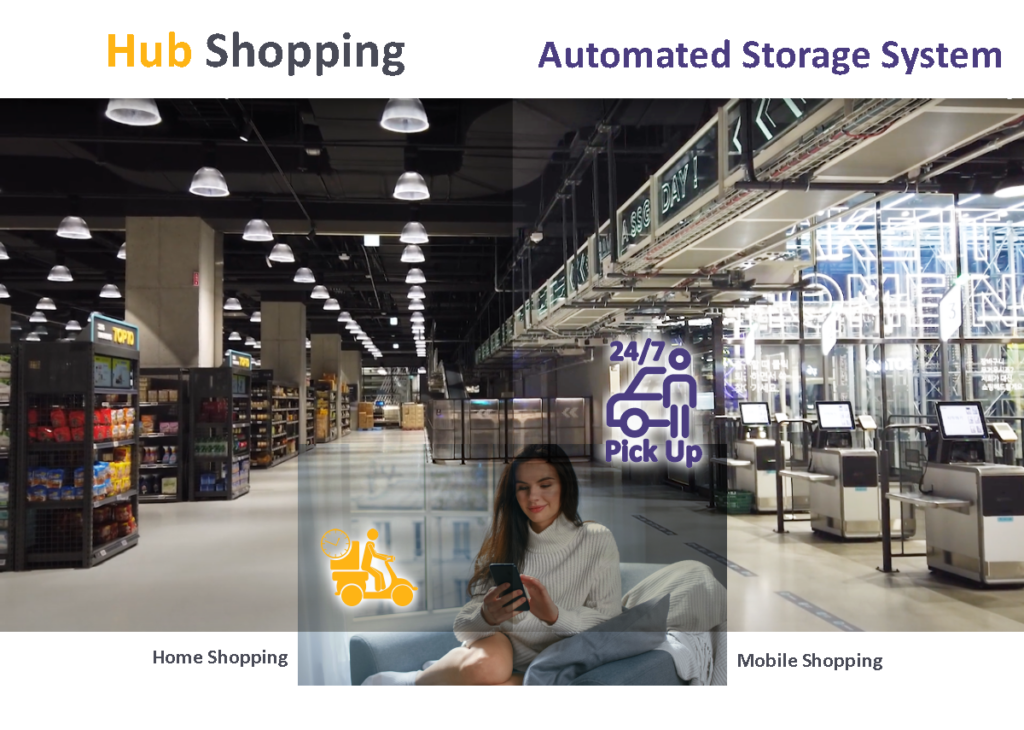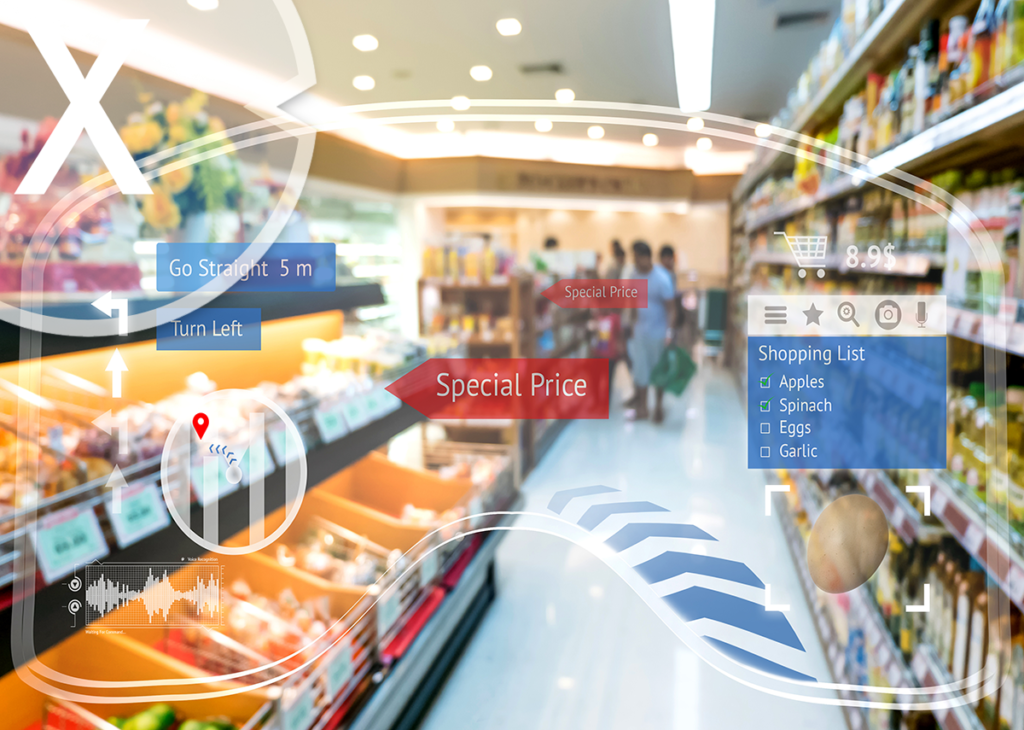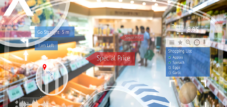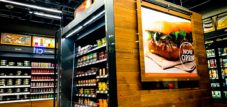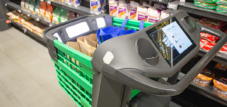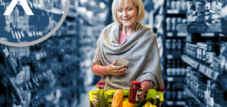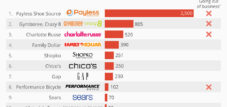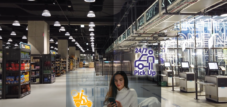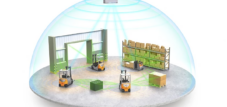Smart Shops 24/7 & Stores 365: Closing supply gaps with Grab & Go technology, vending machines (regiomats) and checkout self-checkout systems
Language selection 📢
Published on: August 7, 2023 / Update from: August 7, 2023 - Author: Konrad Wolfenstein
From Walk In to Just Walk Out: How Technology Is Changing Retail
Germany has been experiencing a growing number of smart and autonomous business concepts and vending machines, known as “Smart Store 24/7” since 2020. These shops offer various functions such as fully automated operation, 24/7 accessibility, cashless payment, customer identification and small business areas. There are currently many different concepts in the country that are divided into the categories “Walk in & Walk Out” and “Vending Machines”, whereby AI-based grave & go technology and self-service options are used. Although rural areas in Germany are more progressive in the development of smart stores, the country is lagging behind when the grave & go technology is introduced compared to other European countries. Regiomats, automatic sales machines for regional products, cover gaps in rural regions. The market for smart stores 24/7 is expected to grow quickly in rural areas, whereby the treasurer will dominate. The feasibility of Vending Machines in the retail sector still has to be proven. Despite the challenges, Smart Stores 24/7 are a flourishing niche business in which Rewe, Edeka and others actively test and expand their concepts. The market is expected to experience consolidation, and smart stores 24/7 will remain a relevant niche in the retail sector.
The development of Smart Store 24/7 in Germany
The introduction of Smart Stores 24/7 in Germany began in 2020 and has experienced rapid development since then. These innovative business concepts have revolutionized the traditional shopping experience and offer customers a completely new way of shopping. With their fully automated operation and ability to be accessible 24/7, Smart Stores have created high consumer appeal.
Suitable for:
The advantages of Smart Stores 24/7
Smart stores 24/7 offer a variety of benefits for customers. Thanks to its intelligent and autonomous operation, customers no longer have to stand in queues or wait for staff to make their purchases. This saves time and creates an efficient shopping experience. 24/7 accessibility allows consumers to do their shopping whenever it suits them, without having to comply with opening hours.
Another big advantage of Smart Stores 24/7 is the possibility of cashless payment. Customers can easily pay for their purchases using credit cards, debit cards or mobile payment methods, which is not only convenient but also secure.
The role of AI in smart stores 24/7
AI-powered Grab & Go technology is one of the key innovations in Smart Stores 24/7. This advanced technology allows customers to pick their products from the shelves and leave the store without the traditional checkout process. The AI recognizes the selected items and automatically calculates the amount due, which is then paid via cashless payment. This creates a seamless and efficient shopping experience.
The challenges of smart stores 24/7
Despite the impressive growth and benefits of Smart Stores 24/7, there are also challenges that need to be overcome. One of the main challenges is the slow adoption of Grab&Go technology compared to other European countries. Germany should make further efforts to promote this innovative technology in rural and urban areas alike.
Another challenge is to prove the feasibility of vending machines in the retail sector. Although these concepts are promising, they still need to be proven in practice and gain consumer trust.
The future of Smart Stores 24/7 in Germany
Despite the challenges, the 24/7 smart stores market is expected to continue to grow in the coming years. Especially in rural areas where the supply of traditional stores is limited, smart stores offer an attractive alternative for consumers 24/7.
The checkout self-checkout system is expected to dominate in the future and AI-powered technology will continue to evolve to create an even smoother shopping experience.
Closing supply gaps
Smart Stores 24/7 have revolutionized the retail market in Germany and offer customers an innovative and convenient shopping experience. With their numerous advantages and advanced AI technology, they have the potential to remain a relevant niche in the retail sector well into the future. However, Germany should make further efforts to accelerate the adoption of Grab&Go technology and gain consumer trust in vending machines. If these challenges are overcome, Smart Store 24/7 will undoubtedly shape the future of retail in Germany.
Suitable for:
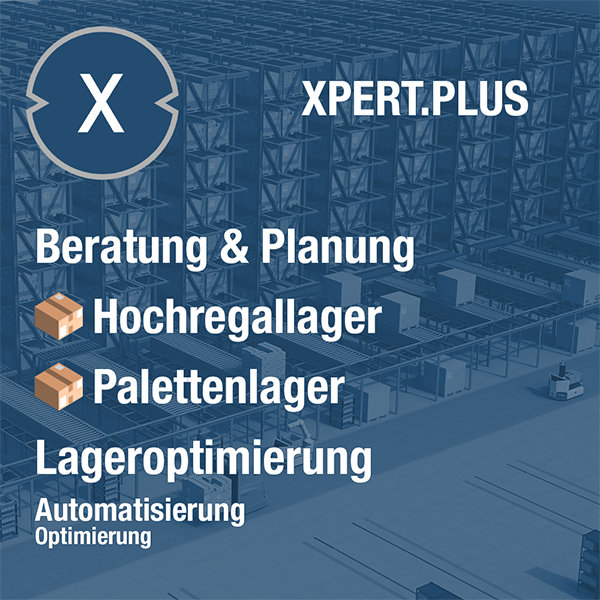
Xpert.Plus warehouse optimization - high-bay warehouses such as pallet warehouses consulting and planning
Innovative shopping concepts are conquering retail: Walk In with Scan & Go, Walk Out and Vending Machines
Retail companies worldwide are always looking for new and improved opportunities to optimize your customers' shopping experience and at the same time make it more efficient. In recent years, three revolutionary concepts have emerged that revolutionize the traditional purchase process: “Walk in with scan & go,” “Walk Out,” and “Vending Machines.” These concepts not only promise higher customer satisfaction, but also provide the potential to lead retail into a new era. Here we take a look at the details and news about each of these exciting shopping models:
Walk in with Scan & Go
Walk In with Scan & Go refers to a shopping method in which customers have the opportunity to go directly to the store, scan their purchases themselves and then pay at a checkout without waiting. This concept is particularly popular in supermarkets and larger retail stores.
News and developments
- Sensors and advanced image processing technologies allow customers to easily scan products with their smartphone, significantly speeding up the shopping process.
- Some retailers are integrating artificial intelligence and machine learning to provide customers with personalized offers and recommendations as they shop.
- Privacy and security concerns have led many companies to implement robust security measures to protect customer data from unauthorized access.
Walk out
The Walk Out concept goes one step further and promises a seamless and checkout-free shopping experience. Customers enter the store, select their products and leave without paying at a traditional checkout. The technology automatically monitors the selected items and calculates the amount due.
News and developments
- This concept has proven particularly useful in convenience stores and small shops that want to enable purchases to be processed quickly.
- Walk Out technology has improved greatly in recent years and can now handle more complex product categories and larger item volumes.
- Some retailers are working to combine Walk Out with other technologies like automated shelves and robots to further improve the shopping experience.
Vending Machines
Vending machines are not a new invention, but their importance in retail is constantly increasing. Vending machines are automated vending machines that offer a variety of products, from snacks and drinks to electronics. They are accessible 24/7 and do not require interaction with a seller.
News and developments
- Vending machines have undergone an amazing diversification in recent years and now also offer fresh food such as salads and sushi.
- The integration of cashless payment options such as credit cards, mobile payment services and contactless payments has further simplified the use of vending machines.
- Some companies are using innovative display technologies and interactive user interfaces to improve customer interaction and strengthen the brand experience.
Exciting developments in retail
Walk In with Scan & Go, Walk Out and Vending Machines represent exciting developments in retail that can revolutionize the shopping experience for customers and increase retailers' efficiency. As technologies advance and more companies implement these concepts, it will be crucial to find a balanced approach that maximizes the benefits of innovation without neglecting human interaction and service. There are undoubtedly exciting times ahead for retail, and these shopping concepts could be just the beginning of an even more revolutionary future.
From REWE, Amazon to Alibaba: Successful applications of Grab & Go in retail
Grab & Go Technology: The Future of Shopping
Grab & Go technology has experienced rapid development in recent years and is fundamentally changing the way we shop. With the advent of this innovative technology, traditional shopping in supermarkets and stores is being revolutionized. Grab & Go enables a seamless and fast shopping experience without waiting at the checkout. In this text we will delve deeper into this technology and present the most important aspects as well as interesting details and news.
1. What is Grab & Go technology?
Grab & Go technology is based on an intelligent system that combines the use of sensors, cameras and advanced algorithms. It allows consumers to select products in a store and easily plug or add them to their shopping cart without having to go through checkouts or cashiers. The system automatically recognizes the products removed and calculates the corresponding amount. After leaving the store, the amount is debited either via an app on the smartphone or a stored payment method.
2. How does Grab & Go work?
How Grab & Go works is based on a combination of sensor technology and machine learning. In a Grab & Go-enabled store, cameras and sensors are mounted on the shelves and ceilings. These record the movements and withdrawals of products by customers. The sensors recognize the products using barcodes, RFID tags or even image recognition algorithms. The collected data is analyzed in real time and the system automatically creates a shopping list for each customer.
3. Advantages of Grab & Go Technology
- Time Savings: The most obvious benefit of Grab & Go is the huge time savings for consumers. Since they don't have to wait in line at the checkout, shopping time is significantly reduced.
- Reduced operational costs: For retailers, implementing Grab & Go technology can result in significant savings by reducing the need for checkouts and cashiers.
- Improved Customer Experience: Grab & Go provides customers with a smooth and pleasant shopping experience. There’s no need to bother looking for change or dealing with credit cards.
- Real-time tracking: Merchants can better understand their customers' shopping behavior and provide personalized offers and recommendations based on this data.
4. Known applications of Grab & Go
Some well-known retailers and technology companies have already successfully introduced Grab & Go technology (Walk Out, Just Walk Out and Pick & Go). Amazon was one of the pioneers with its Amazon Go concept. Here customers can shop in special Amazon Go stores without having to wait in line at the checkout. A similar concept has been introduced by other retailers such as Walmart, Alibaba and JD.com in their stores.
Suitable for:
5. Challenges and privacy concerns
Although Grab & Go technology offers many benefits, there are also challenges and concerns that need to be addressed. Privacy and security come first. Customer data must be carefully protected and secured against misuse or unauthorized access. There are also concerns about job losses for cashiers and the possible displacement of smaller stores by larger retail chains.
Conclusion:
Grab & Go technology has the potential to fundamentally change the shopping experience and revolutionize retail. The time savings, improved customer experience and the possibility of real-time tracking offer many advantages for both consumers and retailers. However, privacy concerns and social impacts must be adequately taken into account to ensure that the adoption of this technology is positive and sustainable for everyone involved.
The revolution of shopping - Regiomats, Automated Boxes and Vending Machines
In recent years, automation in the trading industry has made amazing progress. Regiomats, automated boxes and vending machines are part of this technological revolution and are changing the way we shop, eat and consume. These innovative vending machines offer numerous benefits, including time savings, convenience and access to local and fresh products. In this article, we take a look at these modern buying and selling solutions while highlighting important and interesting details as well as breaking news.
Regiomaten: freshness from the region
1. What are regiomats?
Regiomats are vending machines that offer fresh products directly from regional farms and producers. They can be found in urban areas as well as rural locations and offer a diverse selection of fruits, vegetables, eggs, dairy products and more. These vending machines are often available 24 hours a day and allow consumers to purchase high-quality food directly from producers.
2. Sustainability and support of local agriculture
Regiomats promote sustainability by reducing the transport of food over long distances, reducing CO2 emissions. In addition, they support local agriculture by offering farmers a direct and fair market.
3. Quality and freshness
The products in Regiomaten are usually fresher than those in the supermarket because they are often harvested or produced on the same day. This ensures high quality and an intense taste.
4. News
Regiomats have become a popular trend in many cities. In some regions, local governments and organizations have launched special initiatives to support the development of regiomats. The integration of modern technologies such as QR codes and contactless payment methods has further improved the usability of these ATMs.
Automated Boxes: Automated sales around the clock
1. A variety of products available 24/7
Automated Boxes are modern vending machines that offer a wide range of products including snacks, drinks, toiletries, electronics and more. They are accessible 24/7 and offer consumers a convenient way to purchase urgently needed items even when stores are closed.
2. Personalization and customization
Some Automated Boxes are equipped with advanced technology that allows the sales experience to be personalized. User accounts allow regular customers to save their favorite products and receive tailored offers and discounts.
3. Location flexibility
Automated Boxes can be placed in various locations including airports, train stations, shopping centers, office buildings and university campuses. This makes it easier to make products accessible to consumers near them.
4. News
Some companies have started using automated boxes to sell specialized products, such as high-end cosmetics or even contactless Covid-19 testing kits. By integrating AI and machine learning, the machines can also analyze customers' purchasing behavior and adapt the assortment accordingly to increase customer satisfaction.
Vending Machines: The classic is being reinvented
1. Traditional snack machines are changing
Vending machines have a long history, but today's models are advanced and offer more than just snacks and drinks. In addition to classic products, modern vending machines also offer fresh salads, healthy meals and even warm meals.
2. Artificial intelligence and interactivity
Some vending machines are equipped with AI-controlled screens that offer an interactive user interface. Customers can access product information, receive recommendations and customize their selection.
3. Sustainability and recycling
Environmental friendliness is a top priority for modern vending machines. Many models are energy efficient and offer the option to recycle or reduce packaging materials.
4. News
Vending machines have become an important part of retail and are widely used in areas such as businesses, schools and hospitals. Some advanced vending machines even offer the option of cashless payment via smartphone or contactless credit card.
Advanced technology
Regiomats, automated boxes and vending machines have revolutionized shopping and selling. The advanced technology they utilize provides consumers with greater convenience, choice and access to fresh produce. At the same time, they promote sustainability and support local producers and farmers. As these machines continue to develop features and become more widespread, their importance in the retail landscape will continue to grow.
The future of shopping - checkout self-checkout system and self-service options
Advances in technology have also fundamentally changed the shopping experience in supermarkets and retail stores. Checkout self-checkout systems and self-service options are revolutionizing the way we shop. These innovative technologies offer consumers greater flexibility, convenience and control over their shopping process. In this article, we take a comprehensive look at checkout self-checkout systems and self-service options, including important details and breaking news.
Cash register self-checkout systems: The path to quick processing
1. What are checkout self-checkout systems?
Checkout self-checkout systems are advanced automated checkouts that allow customers to scan and pay for their purchases on their own, without the help of a cashier. Customers either use a mobile scanner or scan the products directly at the checkout.
2. Time savings and reduced waiting times
One of the key features of self-checkout systems is the significant time savings they provide for customers. Instead of waiting in line, they can do their shopping independently and leave the store more quickly.
3. Error minimization and customer control
The automated nature of self-checkout systems reduces human error when entering prices or products. Customers also have control over the entire process, resulting in an increased sense of independence.
News: Some supermarkets and retail chains have started integrating biometric authentication methods such as fingerprint or facial recognition technology into their self-checkout systems. This not only increases security, but also speeds up the payment process.
Retail self-service options
1. RFID technology for smart shopping carts
Some retailers are turning to RFID (radio-frequency identification) technology to make shopping carts smarter. RFID tags on the products allow the shopping cart to automatically record the scanned items and display the total amount. Customers can then pay at special self-checkout kiosks.
2. Smart shelves with automatic stocking of goods
Smart retail shelves use sensors and IoT technology to monitor inventory in real time. When a product runs low, an order is automatically placed and replenished to avoid empty shelves.
3. Mobile apps for the shopping experience of the future
Some retailers offer mobile apps that allow customers to plan their purchases, scan products and complete their purchase virtually. At the exits, they can show the digital receipt and leave the store without queuing at a traditional checkout.
4. News
Retailers are increasingly investing in technologies such as augmented reality (AR) and virtual assistants to make the shopping experience more interactive and entertaining. Customers can explore products through AR apps and get detailed information before completing their purchases.
New purchasing processes
Checkout self-checkout systems and self-service options have improved the shopping experience for consumers worldwide. The advantages range from saving time and minimizing errors to personal control over the purchasing process. The integration of advanced technologies such as biometric authentication and RFID tags shows that these solutions are evolving to make the shopping experience even more convenient and seamless. The future of shopping will undoubtedly be shaped by innovative technologies that offer customers more freedom and flexibility.
The different Smart Store variants
➡️ The Autonomous Retail System (ARS) was the groundbreaking concept that laid the foundation for the emergence of various smart store variants. It revolutionized retail by leveraging automation and autonomization to improve customer experience and operational efficiency alike. The idea behind the ARS was to create a seamless shopping experience where customers could shop autonomously and self-determined.
Following the success of the ARS, various companies and retailers began developing different variations of it to meet the individual needs of customers and the demands of the market. Here are some of the notable variants:
Autonomous Smart Stores
These business models are based on the ARS and offer a similar shopping experience. Customers can navigate stores, select products and pay using smart shopping carts or mobile apps. Some advanced autonomous smart stores also use facial recognition and AI technologies to provide personalized recommendations.
Walk In Store with Scan & Go
A walk in store is a physical retail store that offers customers the opportunity to enter and shop without making an appointment. Unlike online stores, customers in the walk-in store can enjoy the shopping experience, receive personal advice from employees and take products with them immediately without having to wait for delivery. The walk-in store is therefore a traditional retail method that offers customers a haptic and immediate shopping experience.
At Walk In Stores with Scan & Go, the focus is on the simplicity and efficiency of the shopping process. There are usually no more information centers or human cashiers here. Customers can simply walk into the store, scan products and pay for their selections via an app or the scanner and leave the store without waiting. This model aims to reduce operational costs and enable quick turnaround.
Scan & Go is a modern retail technology that allows customers to scan and pay for their purchases in-store independently, without queuing at the traditional checkout. The process is simple: the customer uses a smartphone or a special hand-held scanner to scan the barcodes of the products as they place them in their shopping cart. The items are automatically saved in a shopping list and the total price updates in real time. Once the customer has finished shopping, they pay the total amount directly via the app or scanner and leave the store without having to wait in line at the checkout. Scan & Go saves time and offers customers a faster and more convenient shopping experience.
It is important to note that this technology may be implemented differently in different stores and countries. Some stores allow you to place items in bring-your-own bags, while others require final checks by staff to prevent theft.
Pick & Go or Just Walk Out Stores
The “Just Walk Out” technology uses artificial intelligence, image detection and sensors in business to record the articles, select and move customers. Before entering the branch, customers must use a mobile app that processes personal information and payment preferences. When shopping, customers scan a code when entering, items are automatically added to the virtual shopping cart. The automatic credit card payment takes place when you leave the business. A shopping receipt can optionally be requested by email.
Unmanned Smart Stores
This variant goes one step further and relies entirely on the autonomy of the business. Unmanned smart stores are often small units that can be placed in busy areas, shopping centers or even public transport. Customers can select products, pay, and enter or exit the store without the need for human staff.
Personal Smart Stores
In contrast to fully autonomous models, personal smart stores still have a minimum number of human staff. However, these employees are not tied to cash registers, but rather serve as customer advisors or experts in specific product categories. The focus here is on providing expertise and a personalized shopping experience.
The crucial difference – customer experience vs. cost reduction
The key difference between the ARS and the various Smart Store variants is the emphasis on customer experience and autonomy. While the ARS aims to provide customers with a seamless and personal shopping experience, the other models focus more on cost reduction and efficiency for retailers.
The ARS maintains human interactions by incorporating information centers and human cashiers to assist the customer when needed and add a personal element. The other variants, such as unmanned smart stores and walk-in stores, largely forego human interaction in order to minimize operating costs and speed up the purchasing process.
While the ARS remains attractive to retailers seeking a superior customer experience, the other variants offer a cost-effective solution, particularly in high-traffic areas or for fast-moving products.
Since the introduction of the ARS, many companies have jumped on the bandwagon and developed their own Smart Store variants. This has led to a growing variety of autonomous retail concepts that are continually influencing and evolving the market.
Some of the recent developments include the use of cutting-edge technologies such as Augmented Reality (AR) and Virtual Reality (VR) to further improve the shopping experience. Customers can virtually try out products and see how they would look in their home or environment before making a purchasing decision.
More on this in connection with the matrix code, which is scheduled to be used worldwide in 2027:
Xpert.plus-logistics advice and logistics optimization-industry expert, here with its own 'Xpert.digital Industrie-Hub' of over 1,500 specialist contributions
Xpert.Plus is a project from Xpert.Digital. We have many years of experience in supporting and advising on storage solutions and in warehouse optimization, which we bundle in a large network under Xpert.Plus.
I would be happy to serve as your personal advisor.
You can contact me by filling out the contact form below or simply call me on +49 89 89 674 804 (Munich) .
I'm looking forward to our joint project.
Xpert.Digital – Konrad Wolfenstein
Xpert.Digital is a hub for industry with a focus on digitalization, mechanical engineering, logistics/intralogistics and photovoltaics.
With our 360° business development solution, we support well-known companies from new business to after sales.
Market intelligence, smarketing, marketing automation, content development, PR, mail campaigns, personalized social media and lead nurturing are part of our digital tools.
You can find out more at: www.xpert.digital – www.xpert.solar – www.Xpert.Plus




